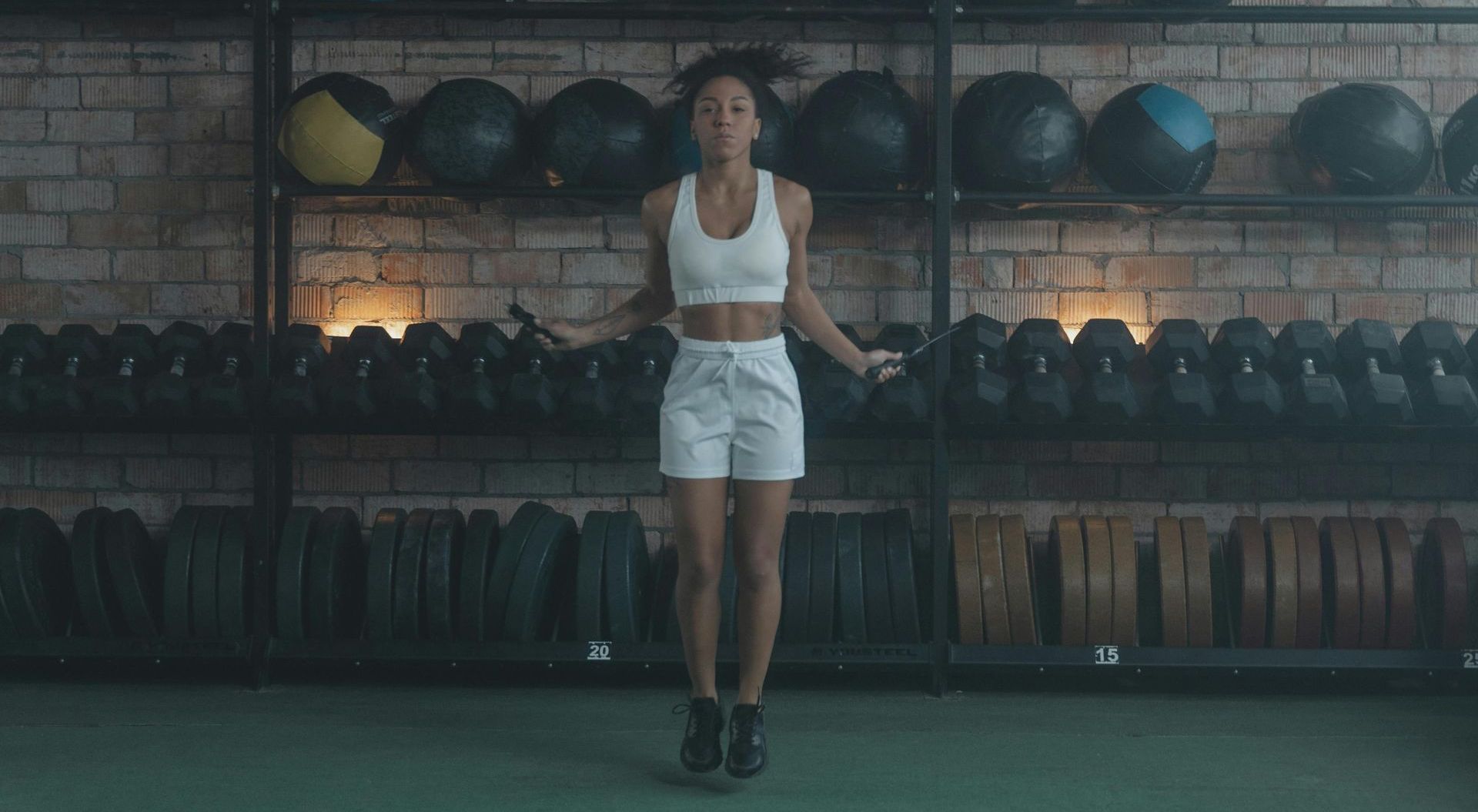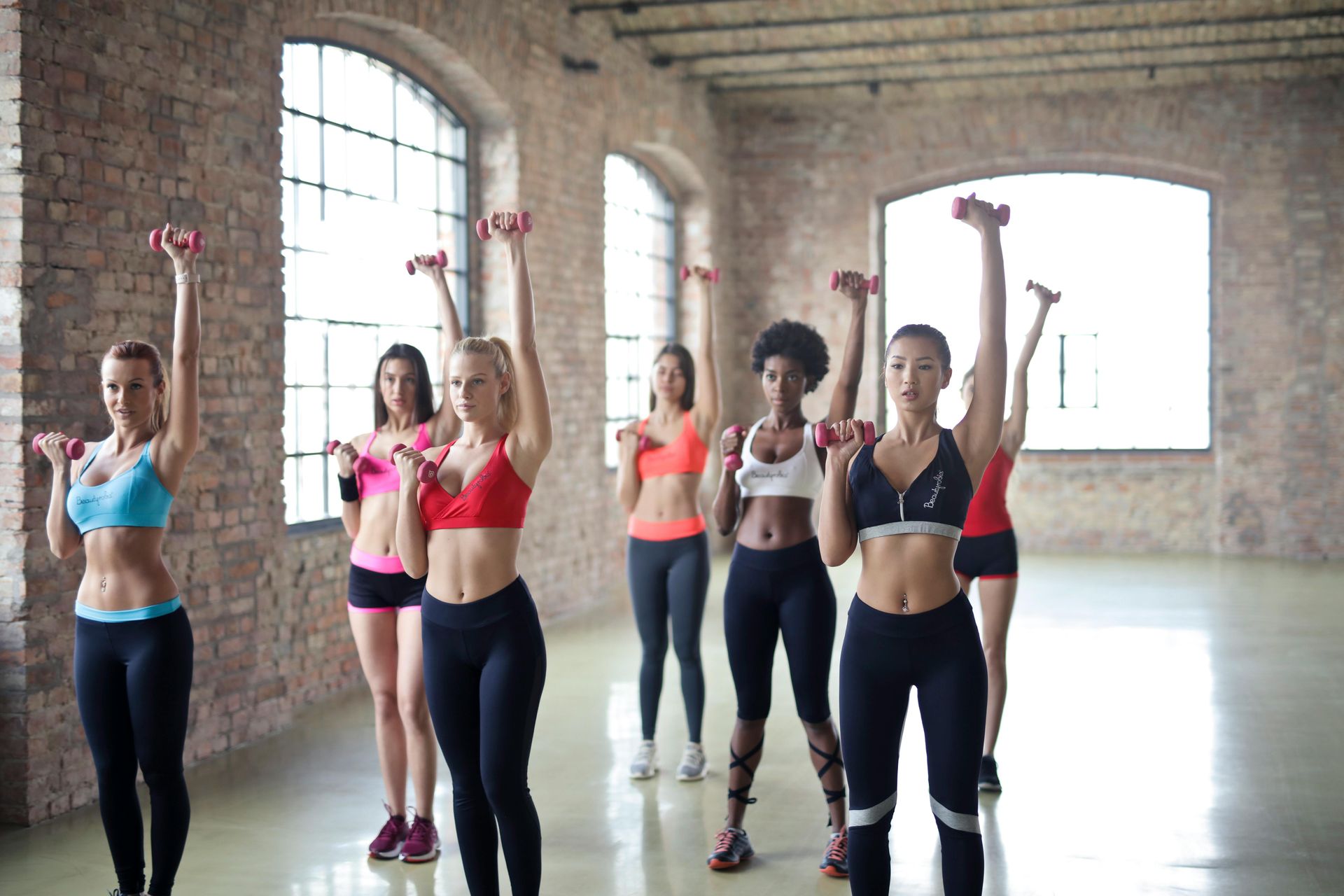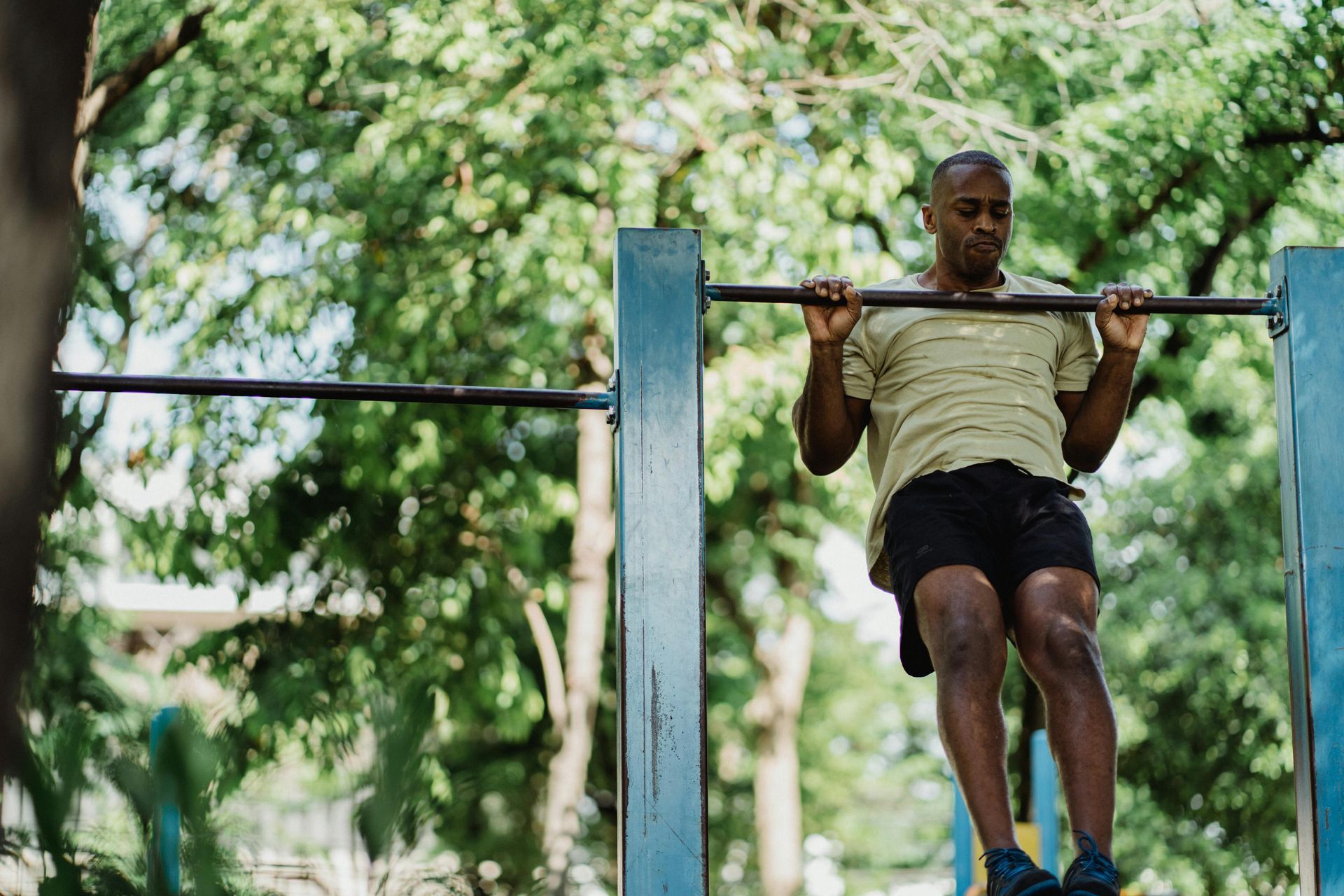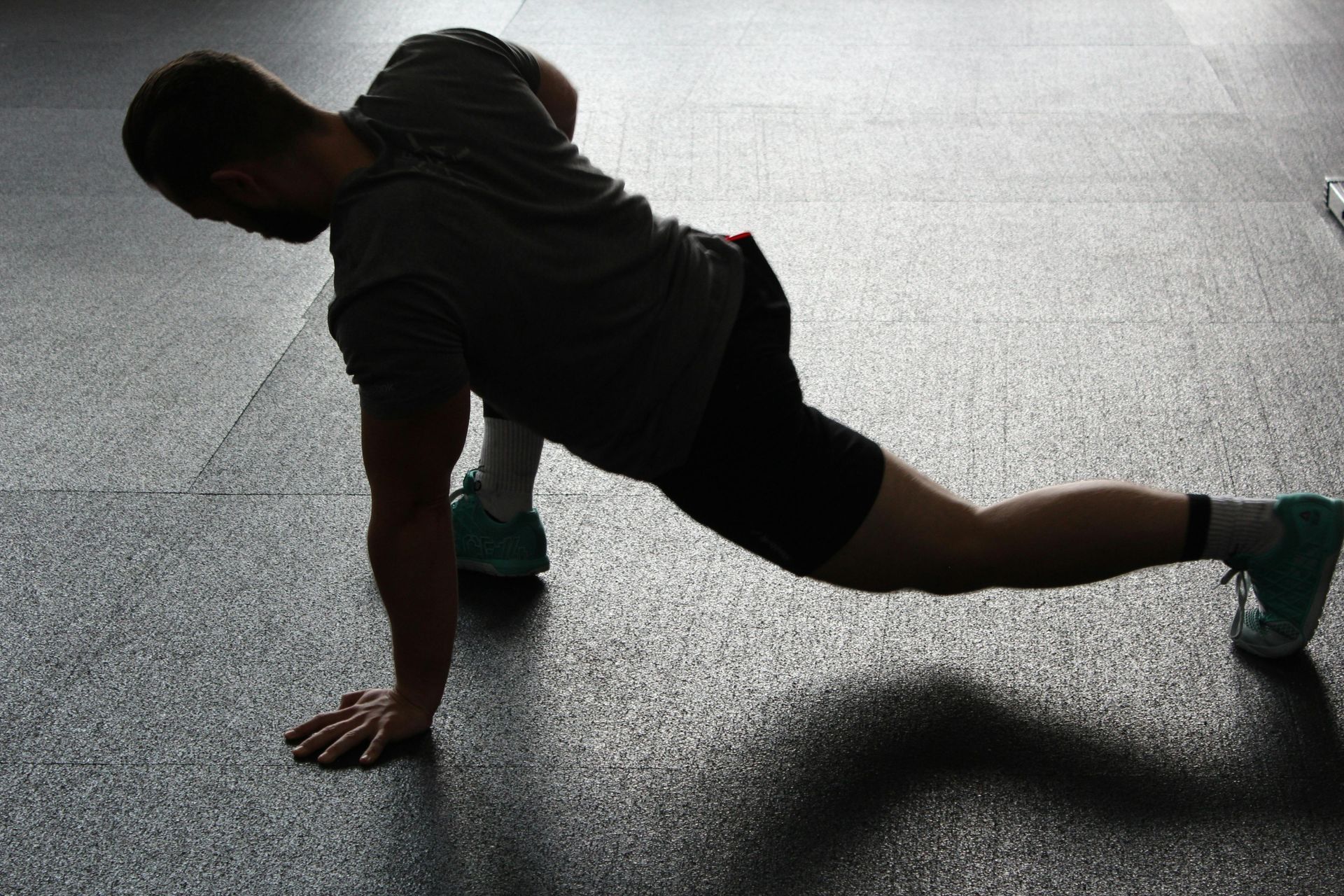The Murph Challenge
Variations, Scaling Options & Standards
The Classic Murph Challenge
- 1-mile run
- 100 pull-ups
- 200 push-ups
- 300 air squats
- 1-mile run
Looking for an Extra Challenge? Skip to the end for a direct link to The Murph EXTRA Challenge.
Need help finding the right fir for completing the Murph Challenge? Scroll down for full details on variations, scaling and movement standards.

The "RX" standards for The Murph Challenge typically refer to completing the workout as originally prescribed, without any modifications. Here are the RX standards for The Murph Challenge:
The RX version involves completing all repetitions of each exercise before moving on to the next.
Run:
- Run 1 mile at the beginning of the workout.
- Run another 1 mile at the end of the workout.
Pull-ups:
- Perform 100 pull-ups.
- All unassisted pullup variations, starting from a dead hang with arms fully extended at the bottom and chin over the bar at the top. Kipping and butterfly pull ups are acceptable.
Push-ups:
- Perform 200 push-ups.
- Start in a plank position with hands slightly wider than shoulder-width apart.
- Lower your body until your chest touches the ground, then push back up to full arm extension.
Air Squats:
- Perform 300 air squats.
- Stand with feet shoulder-width apart, toes slightly turned out.
- Squat down until hips are below the knees, keeping the chest up and heels on the ground, then stand back up to full hip and knee extension.
Time:
- While there is no official time limit for completing The Murph Challenge, completing it in under an hour is considered a notable achievement for many participants.
These standards represent the traditional, full-intensity version of The Murph Challenge as originally conceived. However, it's important to note that individuals may choose to modify the workout based on their fitness level, abilities, and any physical limitations they may have.
Safety and proper form should always be prioritized during any fitness challenge.
Alternate & Scaled Options
The Murph Challenge with Cyndi Partition
- Run 1 mile
Then, alternate between:
5 Cindy Rounds:
- 5 Pull-ups
- 10 Push-ups
- 15 Air squats
and
The Murph Rounds:
- 10 Pull-ups
- 20 Push-ups
- 30 Air squats
**Repeat for a total of 5 rounds of Cindy and 5 rounds of The Murph**
- Run 1 mile
Quarter Murph Challenge
- 0.25-mile run
- 25 pull-ups
- 50 push-ups
- 75 air squats
- 0.25-mile run
The Half Murph Challenge
- 0.5-mile run
- 50 pull-ups
- 100 push-ups
- 150 air squats
- 0.5-mile run
The Rowing Murph Challenge
- 2000/1800m row
- 100 pull-ups
- 200 push-ups
- 300 air squats
- 2000/1800m row
The Partner Murph Challenge
- 1-mile run (together)
- 100 pull-ups (shared)
- 200 push-ups (shared)
- 300 air squats (shared)
- 1-mile run (together)
The Time-Capped Murph Challenge
- 1-mile run
- Max pull-ups in 10 minutes
- Max push-ups in 10 minutes
- Max air squats in 10 minutes
- 1-mile run
Scaling the Movements
Scaling can help individuals of all fitness levels participate in workouts that include exercise movements outside of individual ability or reach. Here are some common scaling options:
Pull Ups
Assisted Pull-ups:
- Use a resistance band looped around the pull-up bar and under your feet or knees to provide assistance as you pull yourself up.
- Use a large band, pulled across j-hooks secured to the rigging.
Inverted Rows:
- Set up a barbell in a rack or use a suspension trainer at waist height.
- Lie underneath the bar or handles with arms extended and feet on the ground.
- Pull your chest towards the bar while keeping your body in a straight line.
- Lower yourself back down with control and repeat.
Ring Rows:
- Set up a pair of gymnastics rings or a suspension trainer at chest height.
- Hold onto the rings with arms extended and feet positioned underneath.
- Lean back, keeping your body in a straight line, and pull your chest towards the rings.
- Lower yourself back down with control and repeat.
Push Ups
Knee Push-ups:
- Start in a plank position with your knees on the ground and your hands slightly wider than shoulder-width apart.
- Lower your chest towards the ground by bending your elbows, keeping your body in a straight line from head to knees.
- Push back up to the starting position by straightening your arms.
- Focus on maintaining proper form and engaging your core throughout the movement.
Incline Push-ups:
- Place your hands on an elevated surface such as a bench, step, or sturdy box, with your body forming a straight line from head to heels.
- Lower your chest towards the elevated surface by bending your elbows, keeping your body in a straight line.
- Push back up to the starting position by straightening your arms.
- Adjust the height of the surface to increase or decrease the difficulty as needed.
Wall Push-ups:
- Stand facing a wall with your feet hip-width apart and your arms extended, hands placed on the wall at shoulder height.
- Lean towards the wall and bend your elbows to lower your chest towards the wall.
- Push back to the starting position by straightening your arms.
- Adjust your distance from the wall to increase or decrease the difficulty.
Assisted Push-ups:
- Use a resistance band looped around your shoulders and anchored to a stable object behind you.
- Hold one end of the band in each hand and perform push-ups as usual, with the band providing assistance as you press up.
- Choose a band with appropriate resistance to match your strength level.
Hand-release Push-ups:
- Start in a plank position with your hands slightly wider than shoulder-width apart.
- Lower your chest towards the ground by bending your elbows.
- Once your chest touches the ground, lift your hands off the ground for a moment.
- Replace your hands on the ground and push back up to the starting position.
- This variation helps ensure full range of motion and emphasizes the pressing portion of the push-up.
Air Squats
Partial Squats:
- Perform squats to a shallower depth, stopping when thighs are parallel to the ground or higher if needed.
- This option reduces the range of motion and may be more manageable for beginners or those with mobility limitations.
Box Squats:
- Stand in front of a sturdy box, bench, or chair.
- Lower yourself down by bending your knees and hips, aiming to touch your glutes lightly to the box.
- Press through your heels to stand back up to the starting position.
- Adjust the height of the box to control the depth of the squat.
Assisted Squats:
- Hold onto a stable surface such as a door frame, railing, or TRX straps for support as you squat.
- Use your arms as needed to assist with balance and stability.
These scaling options allow individuals to build strength and proficiency in the pull-up movement while gradually working towards performing unassisted pull-ups. Choose the scaling option that best matches your current fitness level and gradually progress as you become stronger.
Are you planning to wear a weight vest?
The Weighted Murph Challenge, wearing a weighted vest (e.g., 20 lbs for men, 14 lbs for women)
- 1-mile run
- 100 pull-ups
- 200 push-ups
- 300 air squats
- 1-mile run
Regeneration does not provide weight vests for its members. Weight vests are a very personal item that holds an individual’s achievements, memories, probably tears, and so much sweat!
These variations offer options for individuals of different fitness levels and preferences. Whether you stick to the classic version, modify it to suit your abilities, add extra weight for an additional challenge, team up with a partner, or opt for a time-capped format, The Murph Challenge remains a powerful test of physical and mental strength.
Looking for an Extra Challenge?
Read about EXTRA Murph Challenges, HERE. Be sure to talk with your coach and formulate the best plan possible for you!








